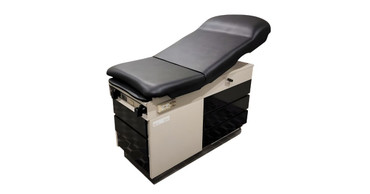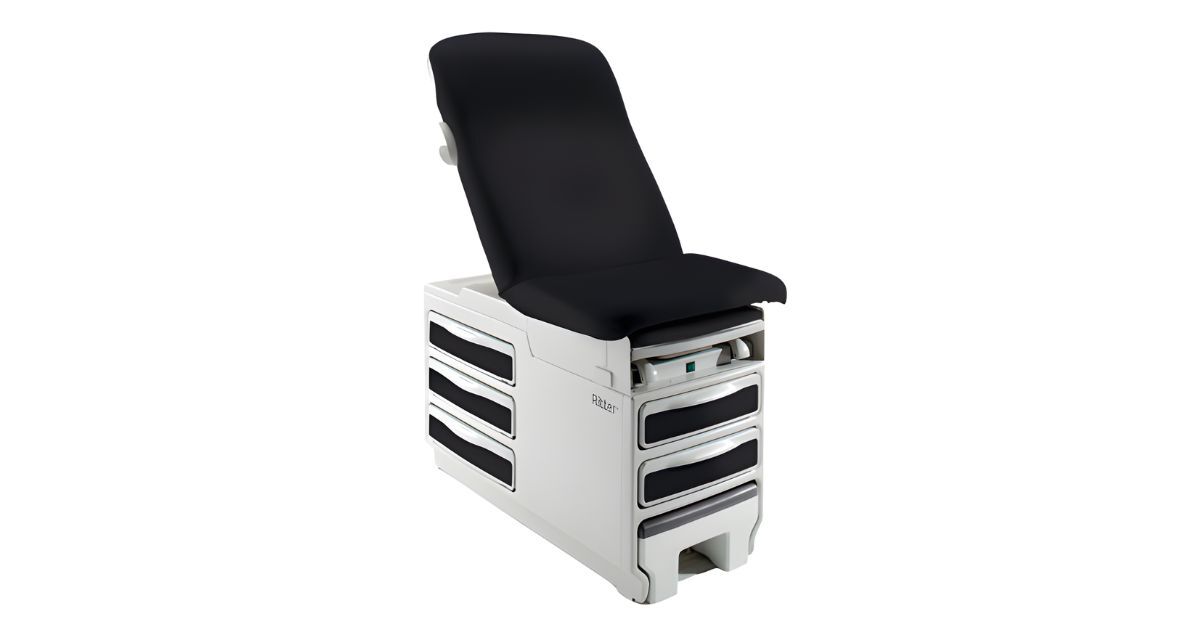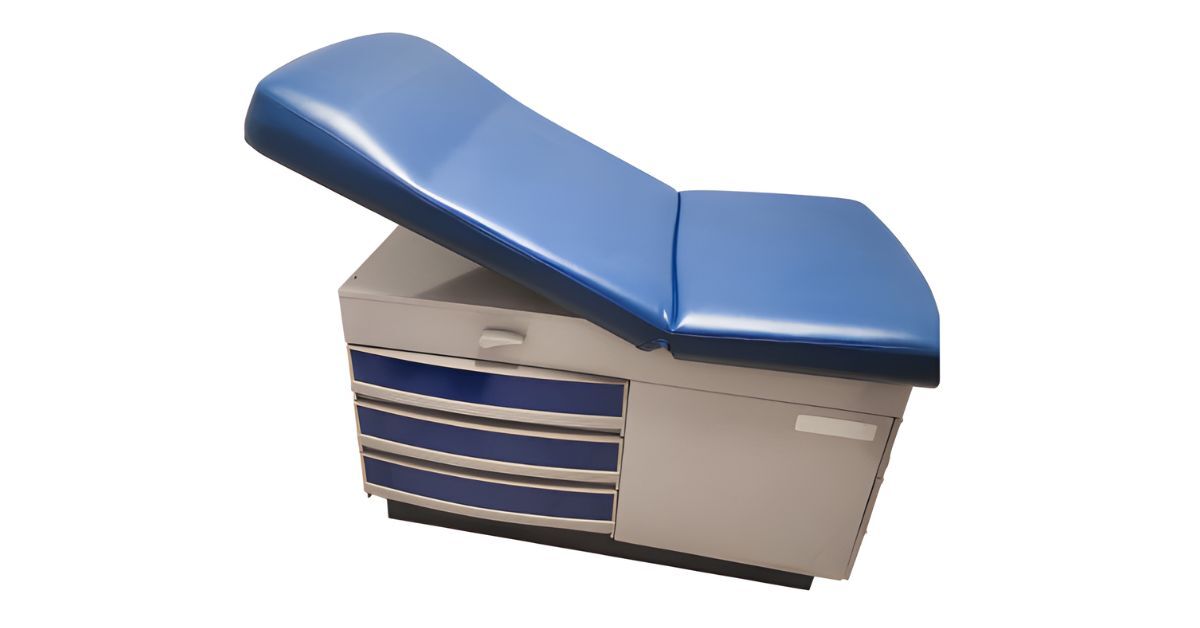
How To Properly Clean & Maintain Exam Tables
Posted by Cevi Med on 23rd Oct 2025
A clean, safe environment is the cornerstone of any medical practice. The exam table, a central piece of equipment, plays a crucial role in patient care and safety. It is where patients place their trust, making its cleanliness non-negotiable.
Knowing how to properly clean and maintain your exam tables ensures a safe experience for every patient. Following these upkeep procedures will help your team protect patients and extend the life of this valuable equipment.
Materials and Tools
Effective cleaning begins with the right supplies. Using appropriate tools and solutions is essential for protecting the upholstery and structure of your medical examination chair. Gathering these items beforehand will streamline your cleaning process.
Approved Cleaning Solutions
Always use EPA-approved disinfectants designed for healthcare settings. Check the EPA’s List N for disinfectants proven effective against specific viruses and bacteria (more on this later). Different solutions have different contact times, which is the duration a surface must remain wet for sanitization to occur. This can range from 30 seconds to several minutes, so read labels carefully.
Generally, it’s best to avoid harsh chemicals like bleach or abrasive cleaners, as they can damage the table’s finish and create microscopic scratches where bacteria can hide.
Essential Supplies
Your cleaning kit should include several key items. Soft, non-abrasive microfiber cloths are ideal for wiping down surfaces without causing damage. You will also need personal protective equipment (PPE), including nitrile gloves, to protect staff from chemicals and pathogens. Depending on the disinfectant used, eye protection may also be necessary, especially with spray applications.
Keeping a dedicated set of these supplies for exam table cleaning prevents cross-contamination with other areas of your clinic.
Cleaning Procedure
A systematic approach to cleaning ensures no surface goes unaddressed. Fortunately, there are only a few straightforward steps you must follow to thoroughly and efficiently clean your exam tables after each patient visit.
Step-by-Step Guide
First, remove any disposable paper or coverings from the table. Wipe away any loose debris with a dry microfiber cloth.
Next, apply your chosen EPA-approved cleaning solution to a fresh cloth—not directly onto the table. Wiping the solution on with a cloth provides more even and effective coverage.
Clean the entire surface of the table, starting from the cleanest areas and moving toward the dirtiest.
Allow the disinfectant to sit for the required contact time specified by the manufacturer. Keep in mind that this contact time can vary between products, and note that some products may ask that you wipe the table dry once the contact time is complete.
After these steps, you may move on to address high-touch areas as needed.
Focus on High-Touch Areas
Certain parts of an exam table receive more contact than others. These high-touch areas require special attention during every cleaning. Focus on armrests, headrests, adjustment levers, and control panels. These surfaces are common transfer points for germs.
Developing a consistent cleaning pattern ensures these critical areas are always sanitized.

Maintenance Tips
Regular maintenance is just as important as cleaning. Proactive care helps prevent equipment failures and extends the lifespan of your refurbished medical tables.
Regular Inspections
Conduct routine inspections of your exam tables. Check the upholstery for any signs of wear, such as cracks, tears, or deep scratches. Damaged surfaces are difficult to clean and can harbor bacteria.
It’s also necessary to regularly examine the table’s frame and base for any structural issues, like loose bolts or wobbling, and test the adjustment mechanisms. Patients will notice if the exam furniture makes strange noises or moves excessively under their weight, which can be unnerving and may ultimately lessen their trust in the practice.
Documenting these inspections helps you track the condition of your equipment over time. Encourage staff to take note of and photograph any equipment issues so that you can maintain a complete picture of your practice’s furniture status.
Prompt Repairs
Address any issues discovered during inspections as soon as possible.
You can patch most small tears in the upholstery with repair kits designed for medical-grade vinyl. Additionally, if a mechanism is sticking, it may only need lubrication. These problems are inconveniences that can lower patient confidence, so while they aren’t immediate hazards, they are important to address.
Meanwhile, significant structural damage or failing adjustment systems require professional service. Prompt repairs maintain patient safety and prevent more costly replacements down the line.
Deep Cleaning and Sanitization
In addition to daily cleaning, it will be necessary to schedule more thorough cleanings. These routine deep cleanings and sanitizations will address areas that between-patient cleanings might miss.
Deep Cleaning
You can base your deep cleaning schedule on your clinic’s patient volume. A busy practice might perform deep cleans weekly, while others may do so monthly. Alongside other areas of the practice, this process involves a more detailed cleaning of the entire medical examination chair or table.
Clean under the table, around the base, and in any crevices where dust and debris can accumulate. Pay extra attention to seams and edges of the upholstery, as these areas are less likely to dry properly and may hide debris. After every deep cleaning, sanitize the equipment as you normally would.

EPA Guidelines and Compliance
Luckily, you don’t have to come up with an entirely unique cleaning plan for your practice’s furniture. The EPA already details compliance guidelines that explain what the federal expectations are and how you can protect your patients. Adhering to federal guidelines is essential for maintaining a compliant and safe healthcare environment that your clinic’s clientele can trust.
EPA Approval for Disinfectants
Only use disinfectants registered with the EPA. This registration confirms that the product has been tested and proven effective against the pathogens listed on its label. Unregistered products may not provide adequate disinfection, putting your patients at risk.
Following List N
The EPA’s List N is a valuable resource that identifies products expected to be effective against SARS-CoV-2, the virus that causes COVID-19. Consulting this list helps you choose the most effective disinfectants for your facility. Always check that your chosen product is on this list to ensure you are meeting the highest standards of infection control.
Maintaining a Safe Clinical Environment
Ultimately, a well-maintained exam table is a reflection of your practice’s commitment to quality care. Consistent cleaning and proactive maintenance are fundamental to providing a safe and welcoming environment for your patients.
When you properly clean and maintain your exam tables, you are not just preserving your equipment; you are upholding the trust your patients place in you. This dedication to hygiene and safety enhances your professional reputation and contributes to better health outcomes.
Cevi Med’s selection of dependable refurbished exam tables makes it easy to furnish your clinic and curate the safe environment your patients expect. By choosing quality equipment and adhering to thorough maintenance protocols, you signal to patients that their health and safety are your highest priorities. This ongoing commitment is key to building lasting relationships and maintaining the credibility of your practice.
